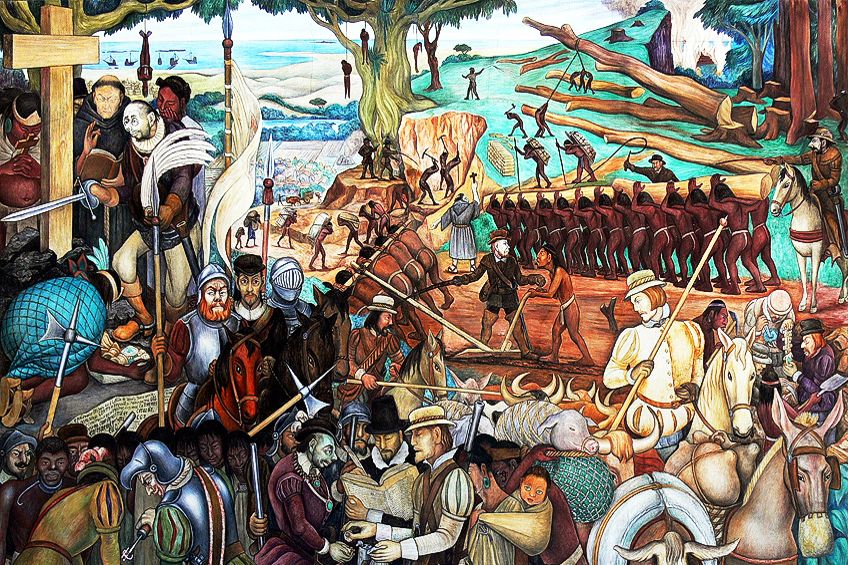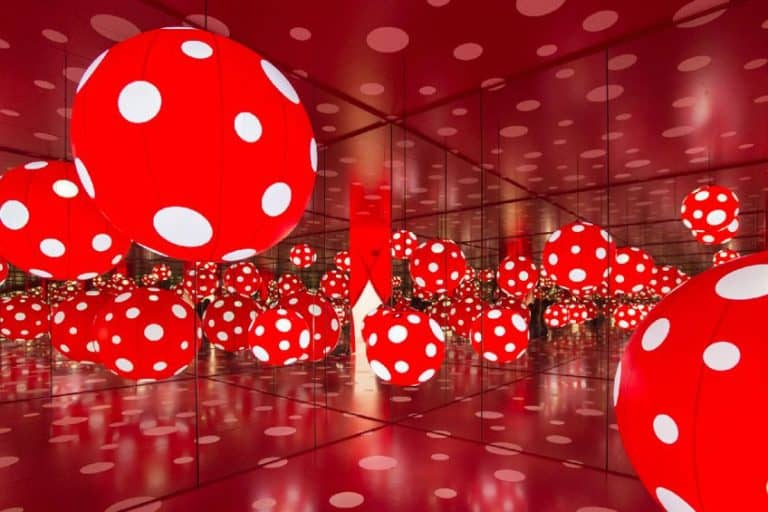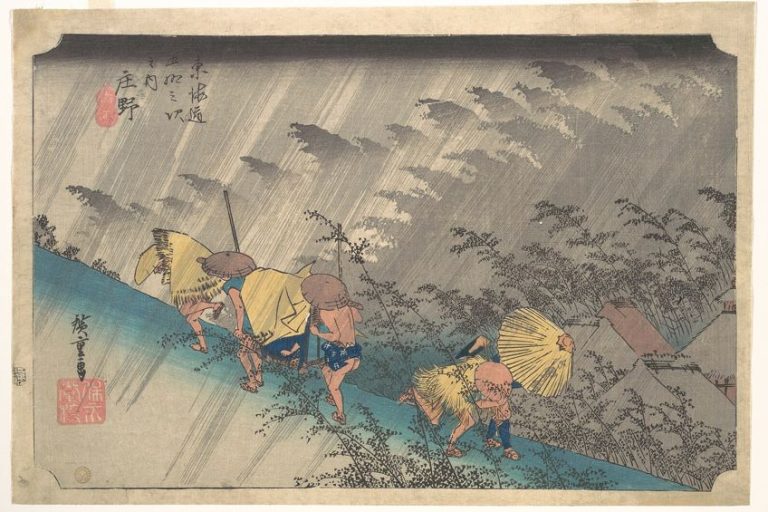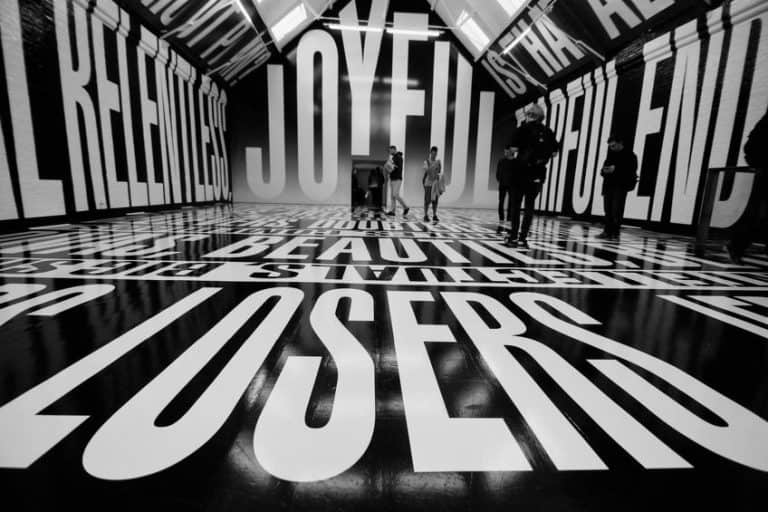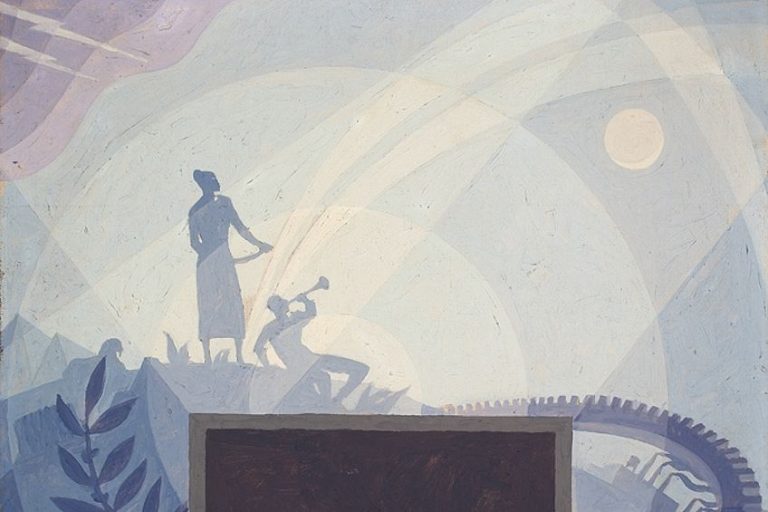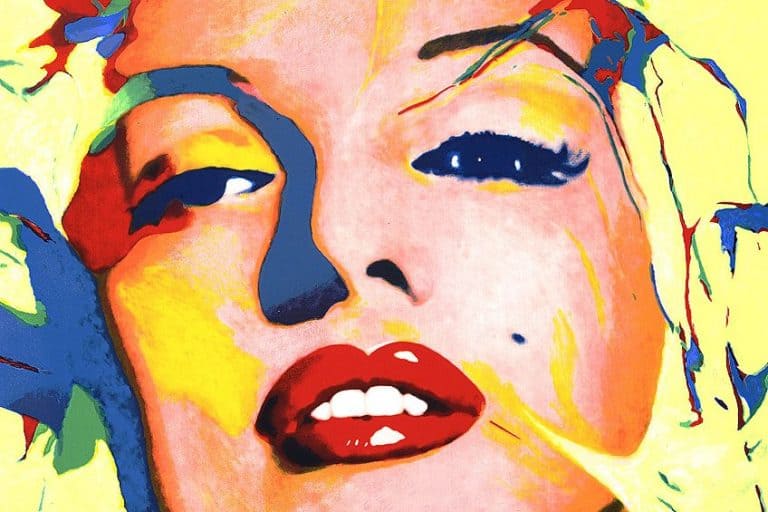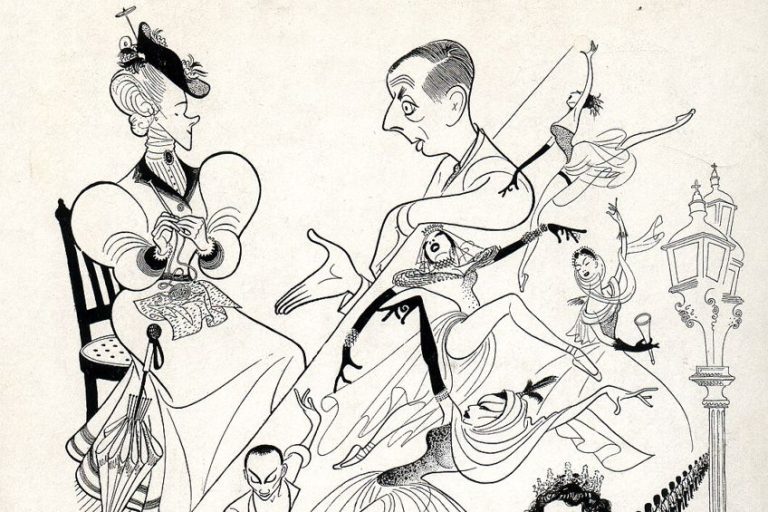Mexican Muralism Art – An In-Depth Look at the Mexican Mural Movement
Mexican muralism art, which emerged around the 1920s, made use of various political and social messages in the murals that were created as the country was nearing the end of the Mexican Revolution. Described as a great cultural transformation that took place, Mexican murals became a great topic of focus in the art world, as the themes derived in the works carried important messages. Ranging from paintings on public buildings to other notable areas, Mexican muralism art spanned for over 50 years, only fading away in the 1970s.
What Was Mexican Muralism Art?
Described as the “greatest Renaissance in the contemporary world” to ever happen, the Mexican muralism art movement was a truly innovative and groundbreaking style of art that developed. As it appeared out of the fragile peace that was left in the country at the end of the revolution, Mexican muralism proved to be an incredibly poignant movement at the time.
As the Mexican mural movement promoted the creation of mural paintings, this style encouraged a big cultural change in terms of the art that was already being produced.
As the country was under the rule of the post-Mexican Revolution government at the time, Mexican murals aimed to reunite citizens through the various social and political messages that were communicated in the artworks.
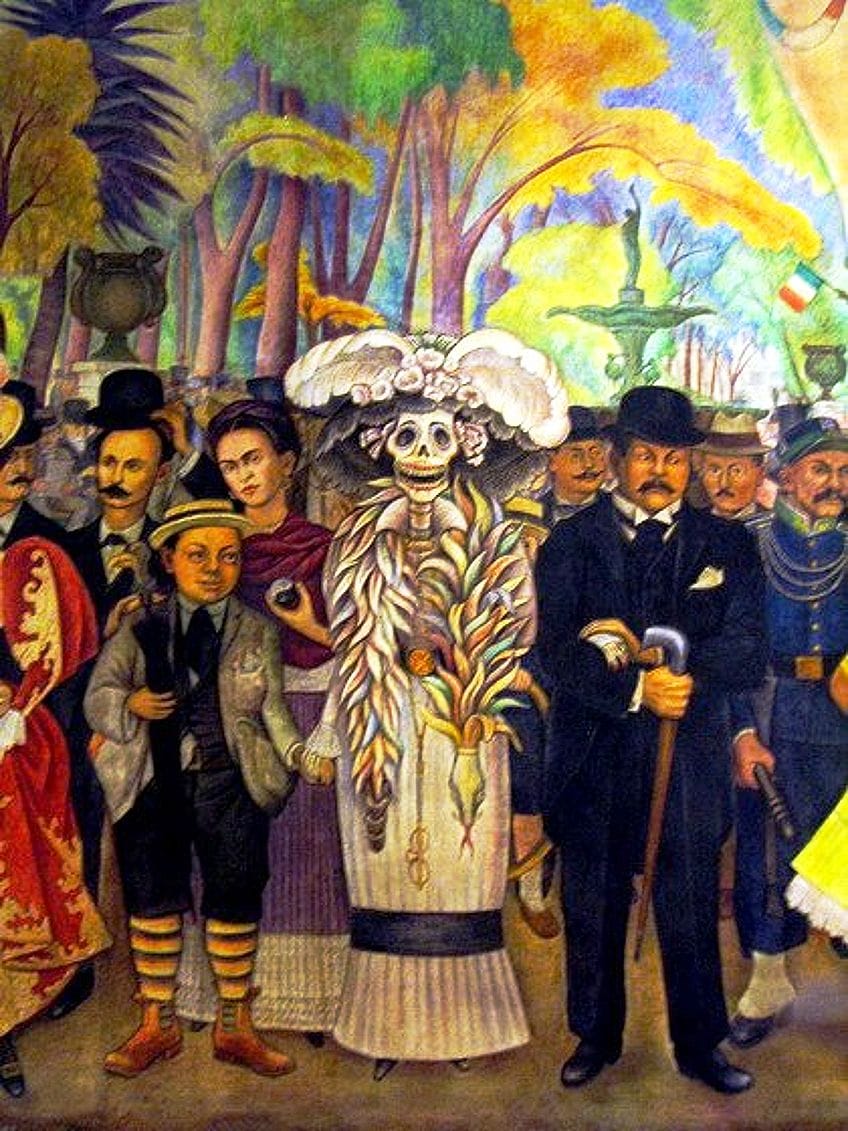
The movement was originally created by the desire to promote feelings of pride and nationalism in a country that was attempting to pick up the pieces left by the revolution. Mexican muralism essentially renewed the concept of painting from something outdated to a prestigious art form with a strong social and political potential.
As the Mexican mural movement spread throughout the country, a deep and vibrant visual language began to develop. This soon appeared in public spaces in an attempt to make art accessible to all without any bureaucratic hurdles.
Mexican muralism art jumped at the chance to teach and enlighten ordinary individuals and the general public through messages of cultural identity, diplomacy, persecution, opposition, progress, and other important issues that were conveyed in the famous murals produced.
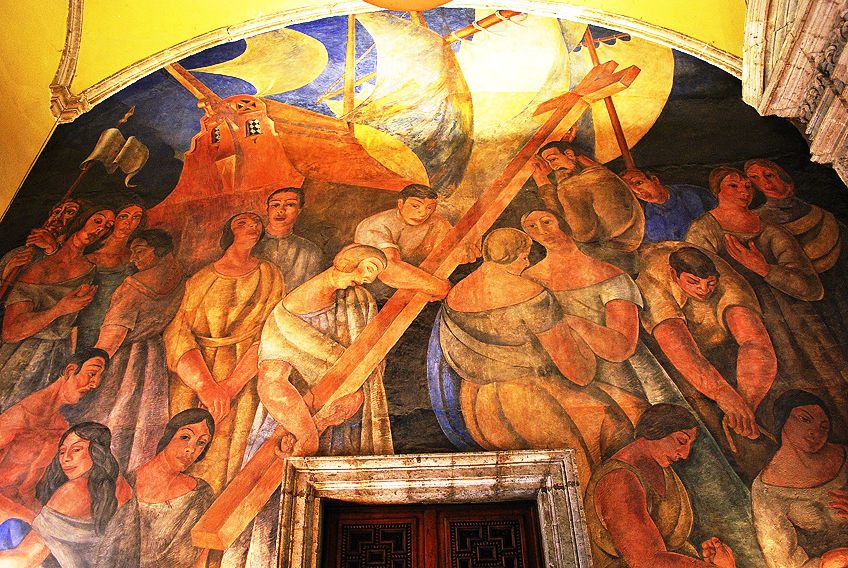
The Mexican mural movement was an extremely independent style of art, with most of its early artists dismissing all outside influences. Led by “the three big” painters, Diego Rivera, José Clemente Orozco, and David Alfaro Siqueiros, these artists used this new, extensive, and liberating movement of mural painting to achieve great personal expression.
Mexican muralism demonstrated that art could be used as a legitimate communication tool outside of galleries and museums, as the revolution led art down a completely new path of exploration.
A History of the Mexican Mural Movement
The Mexican mural movement, also known as Mexican muralism, began as a government-financed form of public art that took over during the 1920s. In the wake of the Mexican Revolution, which occurred between 1910 and 1920, Mexican muralism manifested itself through extensive wall paintings that were found all over civic buildings.
Spanning from the 1920s until the 1970s, the Mexican mural movement communicated various social, nationalistic, and political messages through the enormous murals that were painted.
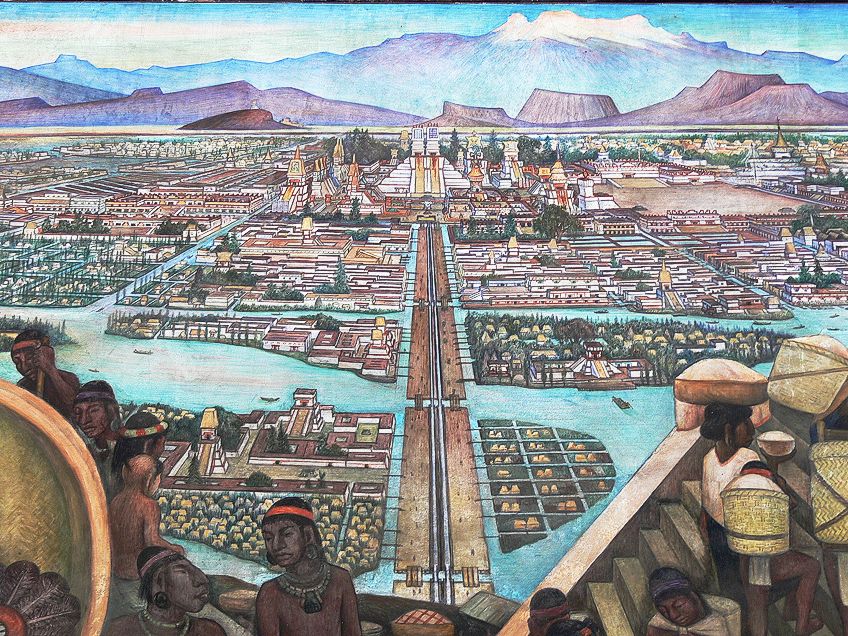
After the political revolt that took place in 1910, the ideas associated with Mexican muralism were already hinted at before the movement fully emerged. Seen as the country’s biggest art movement, Mexican muralism art helped foster the revolutionary cultural change that came about at the end of the Revolution in 1920.
As a new relationship with art and the public was formed, this led to the introduction of art that candidly addressed citizens about social equity and national life.
The concept of murals was initially used as a way to distribute different visual messages to a mostly illiterate and uneducated population within Mexico. These iconic Mexican paintings opened up new possibilities in terms of the involvement and cohesiveness of the broader community in Mexico, as they encouraged citizens to take great pride in their cultural identity and historical traditions.
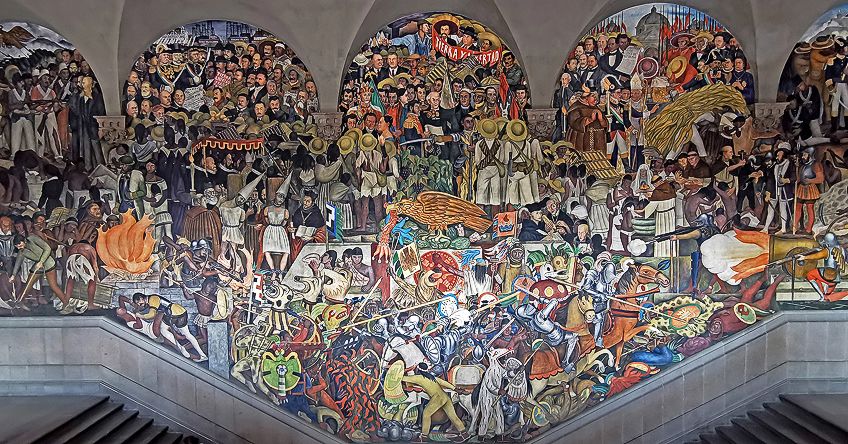
As the potential of these murals grew, artists were able to ignore more traditional forms of advertising and work exclusively on the walls of public buildings. The movement was most active in its production of Mexican artwork and paintings from 1921 to the mid-1950s.
This was at the time when the country was in the process of transforming itself from a largely illiterate and rural society into a more industrialized one.
Mural painters demonstrated a new type of artistic representation in their works that was able to accurately express the cultural values of the time. Thus, a new and truly “Mexican” style of art was being defined, that thrived on expressing controversial and blunt messages.
Traditional Mexican Art
Mexico has had a lengthy practice of mural painting, with this form of art dating back to the pre-Hispanic stage. Beginning with the ancient Olmecs civilization, some of the earliest painted art was created in South America.
This tradition of mural painting was continued and eventually adopted by the Mexican people to tell stories and express the ideas of Catholicism. After this moment, mural painting became one of the most superior forms of art in Mexican culture, as it was seen as a tool capable of great expression.
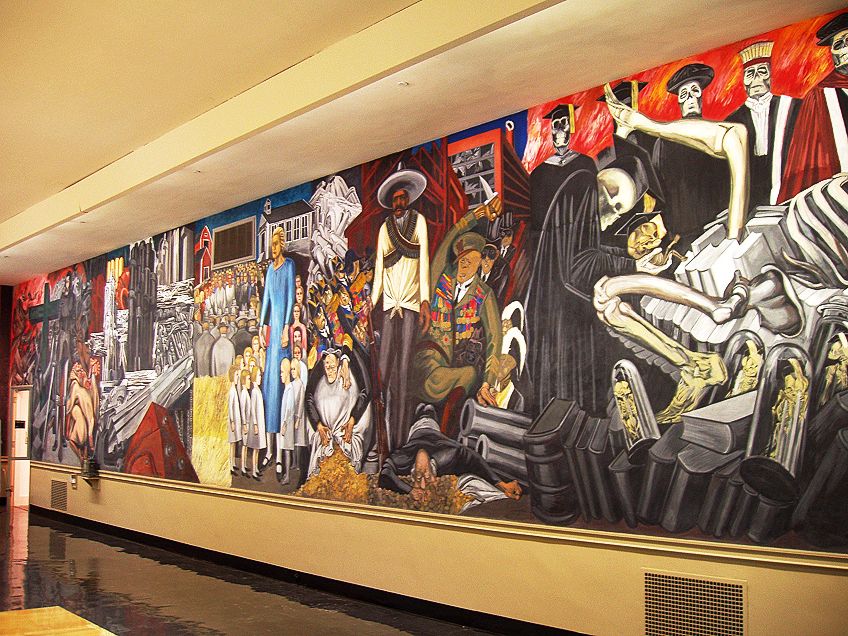
This offered up a stage for the politically driven, which helped encourage the start of the Mexican muralism movement. Mexican muralism was viewed as a heavy predecessor to today’s version of public art. This was because it was able to liberate art from the traditional art market and the exclusiveness that was usually associated with it.
Mural painters were able to create different types of art that were suddenly freely available to all people, which meant that they could find exposure on a much larger scale. The opportunities associated with traditional Mexican muralism were vast and unrestricted, as artists were able to explore almost every concept they wished.
As the art form stemmed from a 1921 manifesto written by painter David Alfaro Siqueiros, Mexican muralism was pitched as an art style that centered around social and political engagement. Muralism created space for artists to openly talk about the convergence that occurred between art and politics, which led to individuals discussing the value that public art actually held in society.
The Mexican Revolution
Seen as a monumental civil war, the Mexican Revolution began in 1910 with a political rebellion held against the dictatorial and oppressive president Porfirio Diaz. This revolt was further backed by various charismatic leaders, who all had incredibly specific and personal political and social agendas on their minds, which also helped shape the course of the entire revolution. This spurred on a decade-long war, which was also furthered by certain artists in addition to the intellectuals driving the revolution forward.
One of these artists was José Guadalupe Posada. This graphic artist was the creator of the first modern mural painting in Mexico, who proved to be immensely influential towards the emerging generation of Mexican artwork and muralist artists.
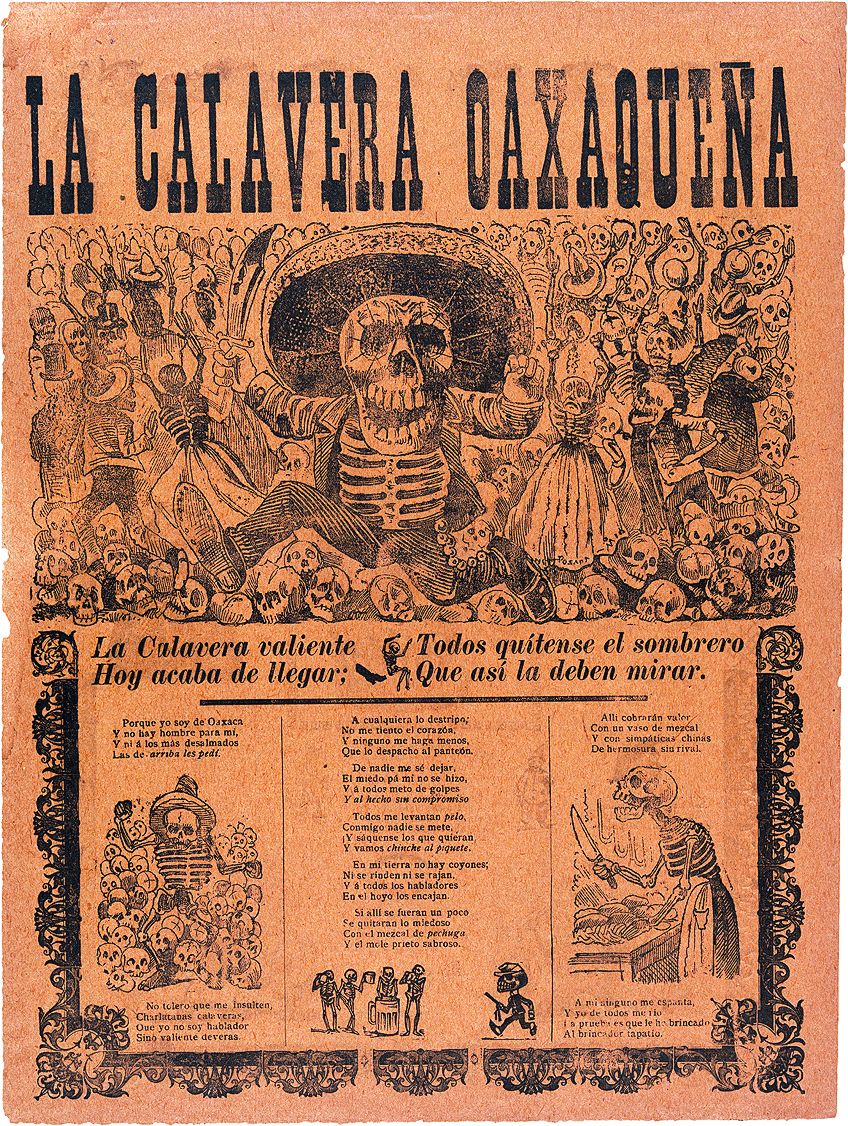
When the Revolution ended in 1920 and President Diaz was overthrown, a new government came into power, which took on the very difficult project of trying to transform a divided Mexico. The country needed an artistic medium that could spread the official history of Mexico, where citizens felt that they fitted in.
As the population was largely illiterate and poor, Mexican muralism entered as the ideal medium to communicate new ideas.
A Government-Backed Program
When the new government came into power after the Revolution, they followed in the footsteps of artist Dr. Alt and began commissioning a large number of public works of art. These artworks were intended to advertise and support the values that were essential to the Revolution and to help establish a new identity for Mexican citizens.
Many mural painters were then assigned to create public artworks but rejected the direction being handed down to them. Instead, these artists worked to incorporate their own ideas and values into their works.
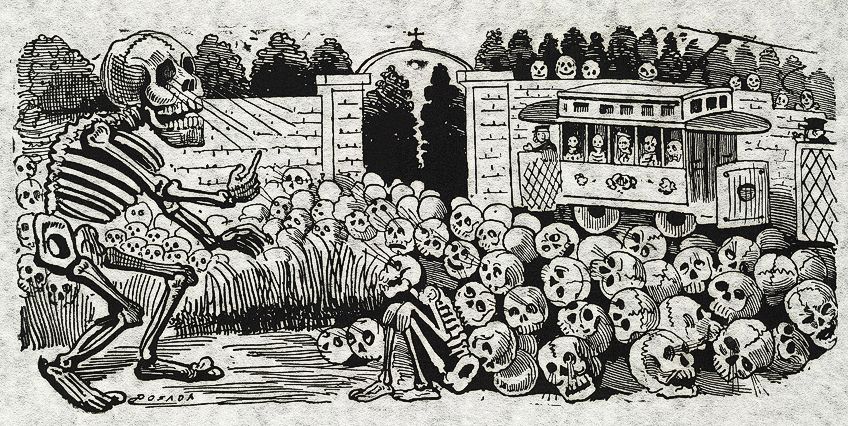
When artists conveyed their own ideas, this sometimes proved to be quite controversial but at other times, they were allowed complete freedom of speech. The most important feature of Mexican muralism art pieces was their ability to communicate Mexico’s vibrant historical traditions through painting, as well as a sense of progression into the modern age.
By the government communicating their cause to the public through large-scale murals in communal areas, the aesthetic appeal of murals helped Mexicans adapt to the new regime of life.
Los Tres Grandes: The Three Greats
Out of the multitude of artists who participated in the Mexican mural movement, three artists emerged as the movement’s most influential, dedicated, distinguished, and prolific. These artists were José Clemente Orozco, Diego Rivera, and David Alfaro Siqueiros, who were internationally referred to as “los tres grandes” meaning “the three great ones”.
These muralists believed that art was the highest form of human expression possible and that it was an essential force in the social revolution that was going on.
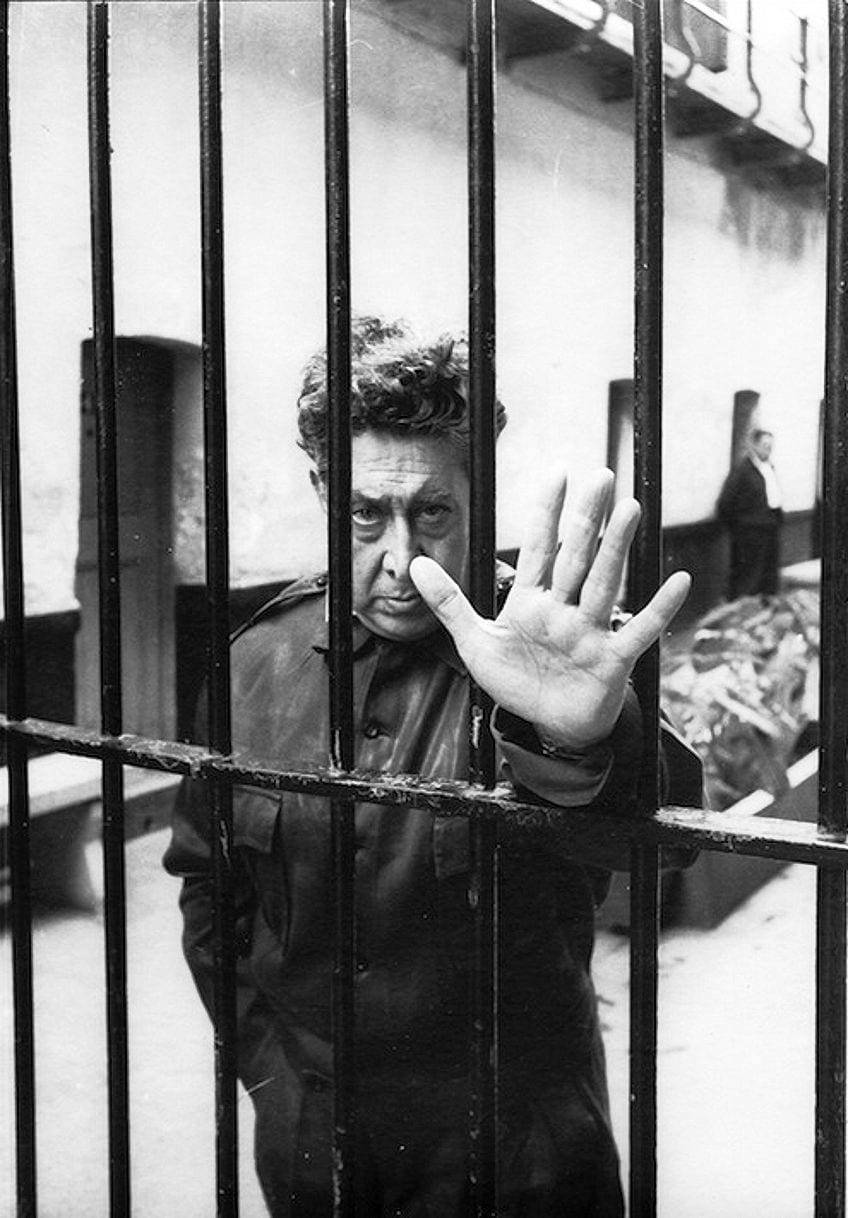
When studying their works, their varying styles and emotions can be seen despite all three artists having the same initial vision. After they all graduated from the prestigious San Carlos Academy, Rivera, Orozco, and Siqueiros studied in Europe and were inspired to different degrees by its modernist paintings.
Although they influenced each other greatly through their artworks, Rivera was never quite acknowledged and accepted by the other two since he did not fight in the Mexican Revolution, yet he boldly dared to depict it in his murals.
Of the three painters, Rivera proved to be the most traditional in terms of his painting style, as he heavily drew from the characteristics and traits of European modernism. In his famous murals, Rivera integrated elements of Cubism, with his themes often portraying scenes from day-to-day life and images of ancient Mexico.
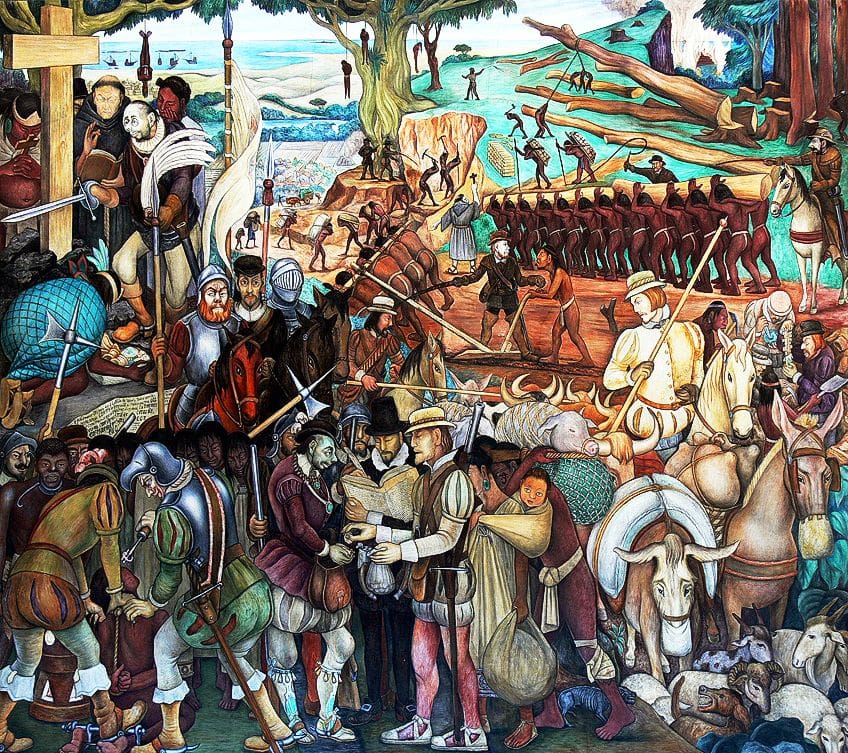
Orozco was the first of “los tres grandes” to arrive in America in 1927, shortly followed by Rivera in 1930 and Siqueiros in 1932. Through their presence, certain techniques of Mexican muralism began to spread. Despite being the leaders of the movement, their artistic expression differed greatly.
While Rivera’s works were more utopian and optimistic, Orozco’s works were very analytic and cynical. However, the most revolutionary and extreme artworks came from Siqueiros, who focused heavily on a future with great scientific advancements.
The difference between these three styles was said to have been based on how each artist experienced the Mexican Revolution, as both Orozco and Siqueiros fought in the war while Rivera lived in Europe.
Characteristics of Mexican Muralism
One of the most important characteristics of the Mexican mural movement was the fact that the majority of participating artists worked in urban areas of the country either creating murals or teaching others. The financial support given by the government allowed artists to succeed in these areas, as the overall aim of Mexican muralism was to convey politically motivated messages to the largely uninformed public.
Another key aspect of the movement was the fact that most of the artists were formally trained, with many having graduated from the San Carlos Academy. This meant that the Mexican paintings and murals produced were considered to be high-quality art, as they communicated important messages whilst still demonstrating the superb skills of the artists.
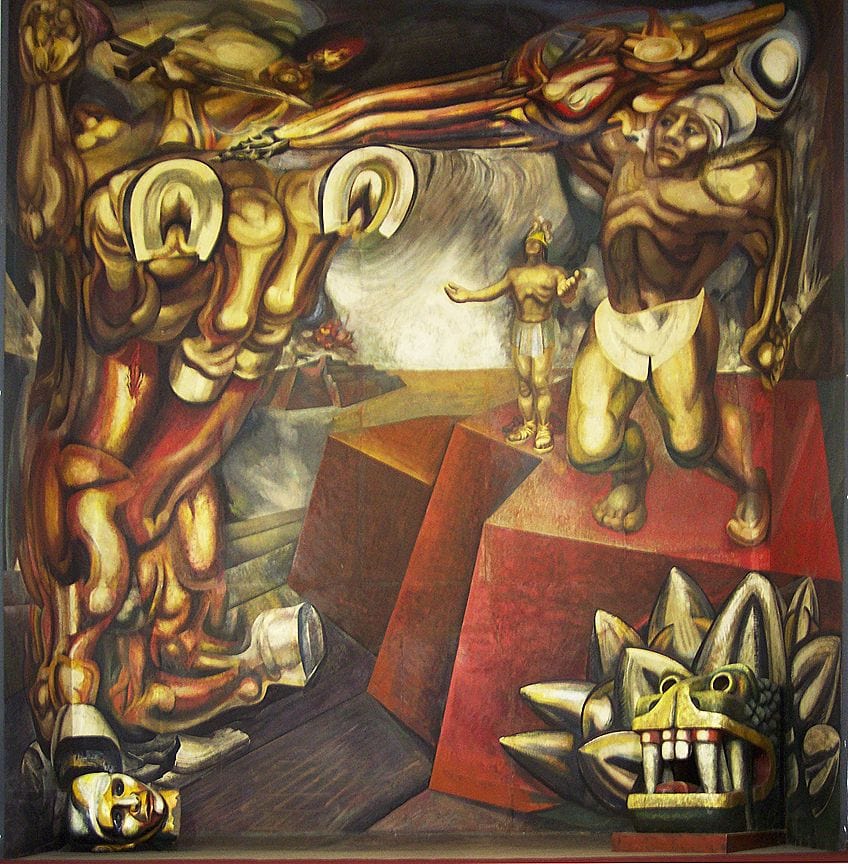
Mexican muralism was most identifiable by the fact that the paintings were placed in large public spaces for all to enjoy. As artists did not create any murals for financial gain, they opened up the art market for everyone to join in, as absolutely anyone could view their works free of charge.
Possibly the most significant characteristic of the movement was that most mural artists were political activists, who felt a great need to be part of the creation of a new national identity.
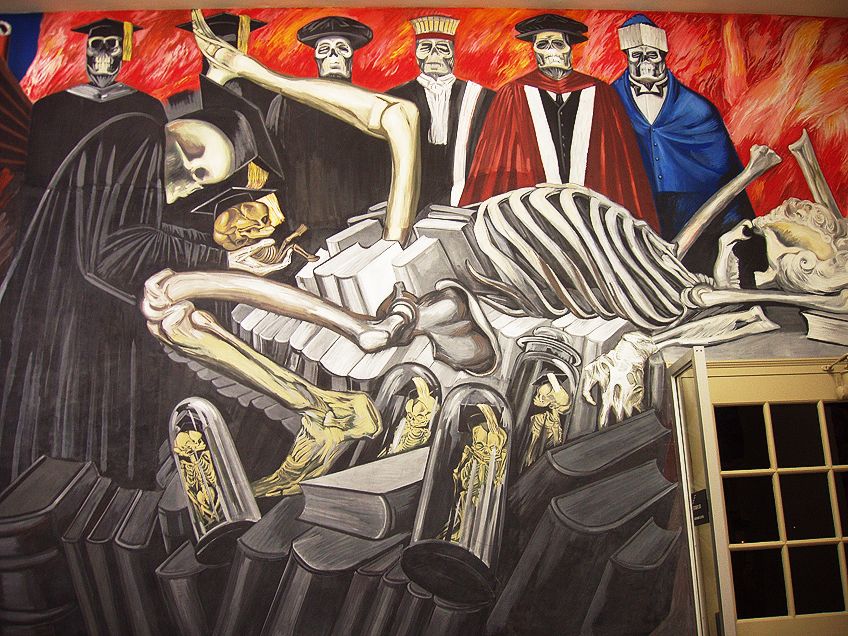
Specific themes that were portrayed in the murals included the support of native Mexican culture, certain aspects of the Mexican Revolution, and the communist battle for social justice, among others. When considering Mexican muralism art, one has to wonder: at what point did the murals cross the line from purely expressive art to propaganda?
It has been suggested that the muralism movement existed in a hazy area between the two concepts, as artworks could contain politically motivated messages whilst still being viewed as just art.
The Impact of the Revolution
As the Mexican muralist movement was instigated by the Mexican Revolution and the civil war that came after, one of its central goals was to change up art in a similar way that the revolution had changed Mexican society.
Mural painting existed as the perfect solution for stimulating revolutionary enthusiasm in the mostly uneducated population, as the narrative content of murals was freely available in all public spaces. The revolution essentially helped in abandoning the conventionally snobbish environment found in most art museums.
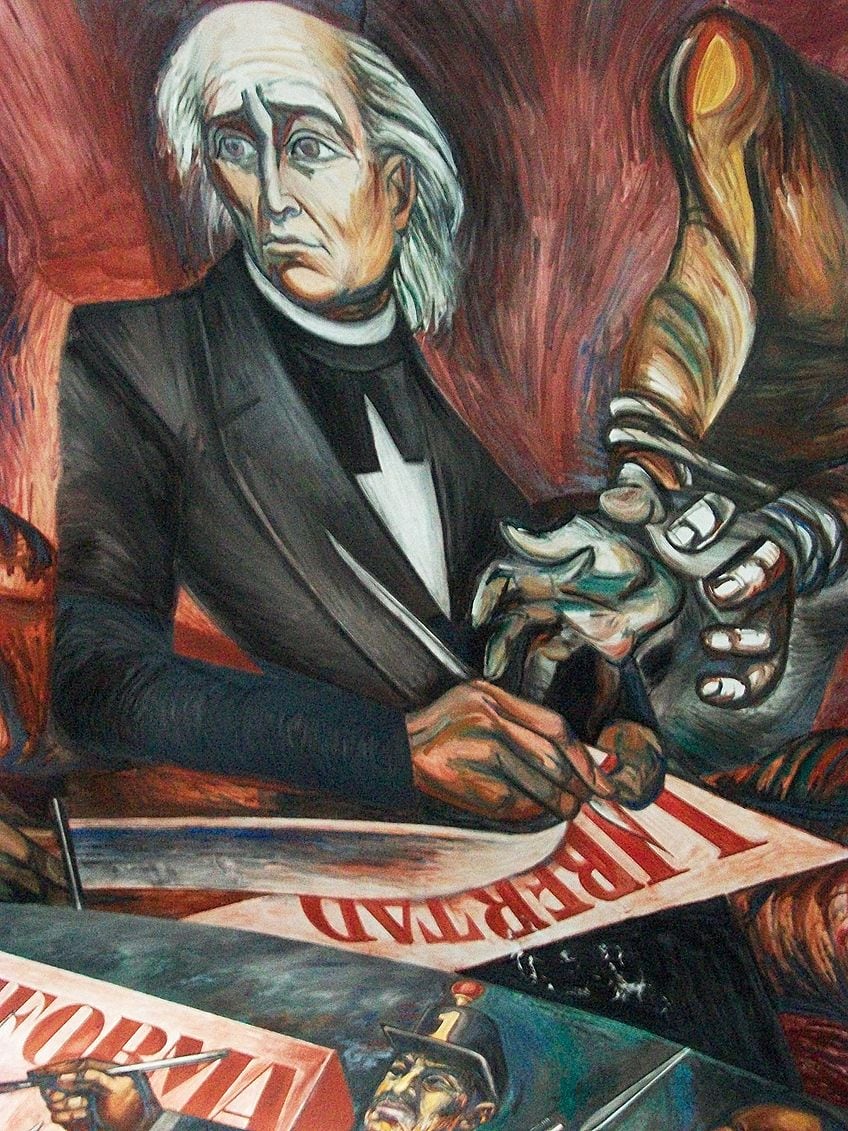
By rejecting the use of museums to display their art, Mexican painters hoped to reject all the traditional aspects and accompaniments of this art form after the revolution ended. This modern thinking allowed artists to paint directly onto walls in public areas after being inspired by older native Mexican wall paintings.
As the end of the revolution helped usher in a new age of artistic production, Mexican murals began to dominate within Western art. The paintings boldly stood out for their rejection of traditional art ideals.
The Impact of Socialism
Although the first Mexican murals painted displayed a strong favoring towards socialism, the Mexican paintings would eventually advance over time to also willingly depict the industrial revolution, the development of technology, and capitalism. Important artists such as Diego Rivera worked with the theme of socialism in his murals, as he believed it to be a very relevant topic at the time.
The key role that Mexican muralism played within society cannot be denied, as its focus on current events made it appropriate and accessible to many people.
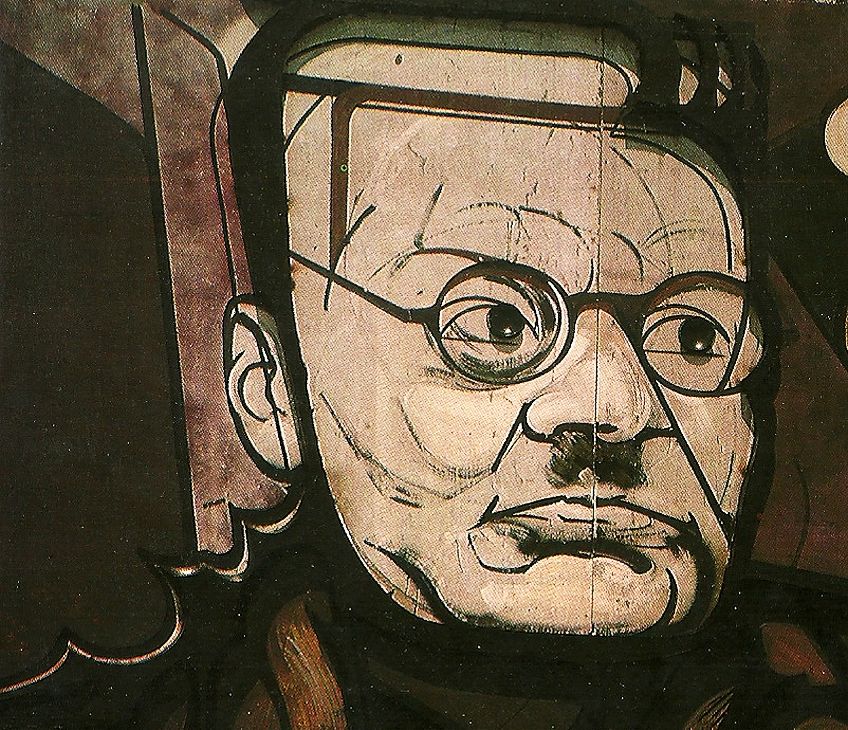
As artists were given complete freedom to choose their subjects and express them however they wanted to, many artists incorporated elements of socialism into their works. David Alfaro Siqueiros was known to apply the socialist approach to his work, as he often divided up tasks and rewarded his assistants equally.
Other artists subtly included socialist symbols into their murals like José Clemente Orozco, who frequently depicted the hammer and sickle.
The Impact of Religion
An important characteristic that could be seen in Mexican muralism was the impact that religion played on the murals made. The main religion of Mexico at the time, which still prevails today, was Catholicism. This religion was introduced as part of the previous Spanish control over the country, with Catholicism being integrated into the imagery and rituals already present in Mexico.
Many mural painters, including Diego Rivera, explored a combination of Western and native religion in several of their artworks.
Mexican Muralism in the United States of America
By the end of the 1920s, the effect of Mexican muralism began to circulate all over the world, most notably within America. After gaining a reputation and great success in Mexico, all three “los tres grandes” made their way over to America to create murals. Orozco was the first of the group to arrive in the United States, after being asked to paint a mural at Pomona College in California.
This marked the official entrance of Mexican muralism in America, which was further emphasized by the arrival of the two remaining great artists later.
Diego Rivera’s move to the United States is possibly more intriguing, as he was actually commissioned to paint murals throughout the country. This led to him staying in America for four years before eventually returning home to Mexico.
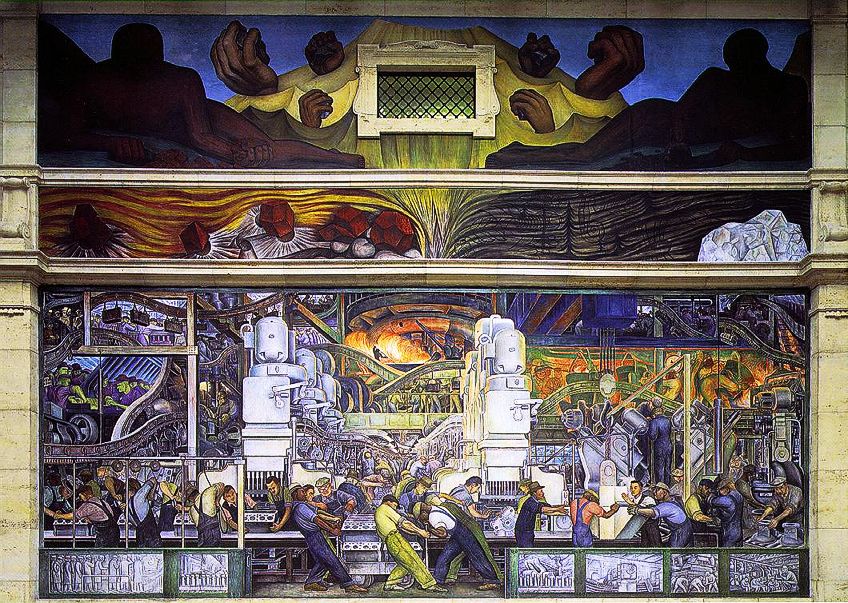
The last of the great three artists, Siqueiros, arrived in the United States in 1932, after being exiled from Mexico. Moving to Los Angeles, Siqueiros went on to paint several celebrated murals during his time there. All three went on to interact with local artists and exhibit their artworks while in America.
Their arrival created quite a stir in American art, with muralism immediately becoming a popular form of public art.
The reason that Mexican artists had such a profound effect on American artists was that America was trying to escape the European aesthetic that controlled the art world at the time, with Mexican society seeming more democratic than their own. The introduction of publicly significant and easily accessible art was like a breath of fresh air for American artists, who were reinspired in their creation of art.
Famous Mural Painters and Their Artworks
When considering the most celebrated and famous murals ever made, the majority of them were more than likely produced by the “los tres grades”. Portraying a variety of themes that included warriors fighting the Spanish for independence, ordinary peasants battling in the Revolution, and the common workers of Mexico City, these Mexican paintings touched on important concepts. Below, we will be taking a look at some of the most significant Mexican murals painted by these three artists, as well as some other notable artists.
The Creation (1922) by Diego Rivera
| Artist | Diego Rivera |
| Date | 1922 |
| Medium | Fresco on gold leaf |
| Dimensions | Unknown |
| Where It Is Currently Housed | Escuela Nacional Preparatoria, Mexico City |
Diego Rivera was a very prominent artist in Mexico, as his large fresco paintings helped to firmly develop and launch the mural movement in both Mexican art and the international art scene. Between the 1920s and 1950s, Rivera painted several important murals around Mexico, as well as in New York City, San Francisco, and Detroit in the United States.
He is also known for being the husband to iconic Mexican artist Frida Kahlo, remaining married to her despite their volatile relationship until she died in 1954.
The Creation was Diego’s first-ever government-commissioned mural painting, which was selected to be painted in the oldest high school in Mexico. The wall that Rivera was required to paint was very unusual in shape, which helped determine the overall composition he chose.
As the huge alcove in the middle had a pipe organ, he painted several figures on the left and right of the arch, with a symbolic image of God prevailing over the slim curve. All of the figures were painted over 12 feet high so that they were in proportion to the pipe organ.
When “The Creation” was originally painted, Rivera used vivid colors in a European style. He later changed his mural to more earthy tones to imitate other indigenous murals at that time.
Existing as an allegorical creation with mythological and religious subjects, Rivera portrayed the Divine Trinity with other significant figures. Although it proved to be a widely popular mural painting, he felt that his technique was too Italian. This led to him carrying a pistol on him while he finished off his work, to defend himself from any conservative students.
Los Danzantes de Chalma (1922) by Fernando Leal
| Artist | Fernando Leal |
| Date | 1922 |
| Medium | Fresco |
| Dimensions | Unknown |
| Where It Is Currently Housed | Escuela Nacional Preparatoria, Mexico City |
Another artist who was considered to be part of the group of equally important mural painters, although not as celebrated as “the three greats”, was Fernando Leal. Despite being among the first painters to participate in the Mexican mural movement before others did, Leal did not gain great fame and recognition like the “big three”.
However, he was one of the first artists that were approached to decorate the Escuela Nacional Preparatoria with his murals, due to his fascination with depicting the native Mexican people in his works.
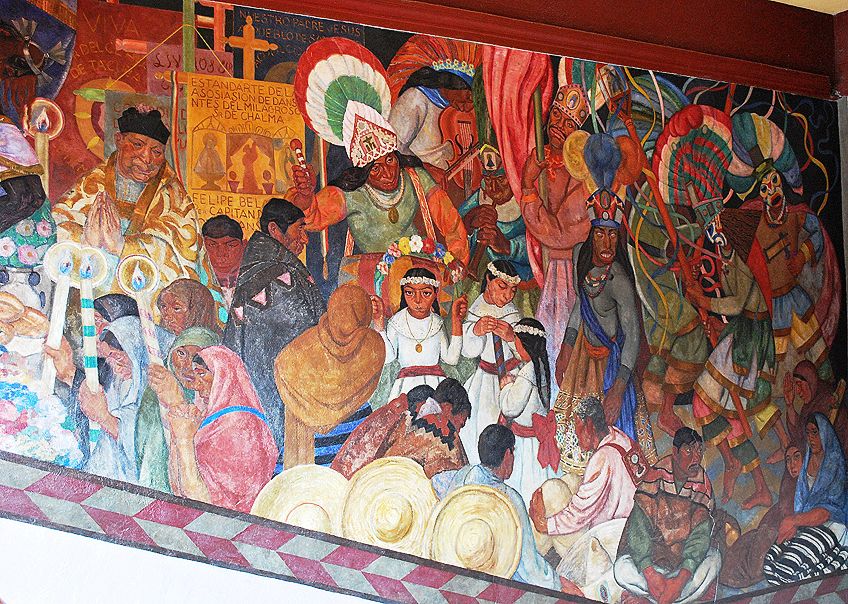
Los Danzantes de Chalma depicts a specific moment that had just occurred in a Mexican village, which Leal heard about. In the top right corner, a ritualistic dance is depicted, which was done to praise and exalt a statue of the Virgin Mary. Leal remarked that his work accurately demonstrated the current blend of Catholicism and local religion in Mexico at the time, as these were essential to the Mexican identity.
By presenting a Western religious ritual as a scene of wild movement and color, he introduced a darker form of muralism. Leal’s mural is said to have been painted using a very Post-Impressionist style, as he was swayed by illustrations of non-Western people in the works of notable artists including Paul Gaugin.
Leal was allowed to select the spot for his mural and ended up choosing a piece of the wall above a middle stairway. This was thought to be a very peculiar space, as it was very geometrically difficult and dark. However, the space acted as an incentive for Leal to use the obvious characteristics of the architecture as part of his blank slate when painting his mural.
The Banquet of the Rich (1923 – 1924) by José Clemente Orozco
| Artist | José Clemente Orozco |
| Date | 1923 – 1924 |
| Medium | Fresco |
| Dimensions | Unknown |
| Where It Is Currently Housed | Escuela Nacional Preparatoria, Mexico City |
José Clemente Orozco helped firmly establish the Mexican mural movement through his participation as one of the “three greats” and practiced as a painter and caricaturist throughout his career. Specializing in political murals, Orozco frequently made use of the theme of human suffering and was considered to be the most complicated artist of all the Mexican mural painters.
Creating murals in Mexico and the United States, Orozco’s works were widely exhibited and were known for his support of political causes of the ordinary.
The Banquet of the Rich is a large mural that was painted over the three-story courtyard in the Escuela Nacional Preparatoria. Approved by the post-revolutionary government to be included in their mural project for the school, the mural portrayed a clear political message. The position of the working class, who were painted at the bottom, represented their place in the social order. Seen to be fighting amongst themselves below, the affluent and heavily caricatured upper-class blissfully enjoy their banquet at the top while remaining unaware.
The absurdly hideous deformation of the faces and bodies of the upper class clearly represented their utter corruption and abuse of authority. Their obliviousness allowed them to cavort rather effortlessly above the working class, as the fight among the workers kept them too busy to pose any real threat to their bosses.
When viewing this mural painting, we can see Orozco’s typical caricature style, which was noticeably different from the Mexican-Italian style being cultivated by Rivera at the time. Orozco was also credited as one of the few artists who blatantly disobeyed orders given to him and freely painted whatever he wanted to.
Borrowing techniques from the years he spent illustrating propaganda papers during the revolution under the direction of artist Dr. Alt, Orozco carefully defined his style which helped make his murals recognizable.
Portrait of the Bourgeoisie (1939) by David Alfaro Siqueiros
| Artist | David Alfaro Siqueiros |
| Date | 1939 |
| Medium | Fresco |
| Dimensions | 92 m |
| Where It Is Currently Housed | Electrical Workers Union Building, Mexico City |
The last of the “three greats” was David Alfaro Siqueiros, who became one of the most famous Mexican muralists of all time. As a social realist painter, Siqueiros was best known for his large murals that were created using the newest apparatus, supplies, and techniques.
He only became thoroughly well-known and renowned in both Mexico and throughout the world later on in his career, when one of his key artworks, “Portrait of the Bourgeoisie”, launched him to immediate fame.
Painted for the head office of the union of electrical workers, Portrait of the Bourgeoisie was commissioned because workers wanted a mural that represented their position of public significance and power.
The biggest section of the mural, which was located on the central wall, was heavily swayed by Siqueiros’ recent encounter of the Spanish Civil War. It depicted a striking representation of both the Allied and German soldiers in World War One, with a machine in the middle busy spitting out bloodstained coins.
“Portrait of the Bourgeoisie” existed as Siqueiros’ warning to citizens about the dangers of crossing branches of government, capitalism, and industry. It was also a representation of the harmful nature of Fascism and Capitalism, with this mural being branded as an essential painting of the 1930s.
As Siqueiros was a politically driven socialist, he pushed for a very democratic artistic process. This meant that his team of assistants were all paid equally and were obliged to take important participatory roles in all of the decision-making tasks.
The Legacy of Mexican Muralism Art
The Mexican mural movement was considered to be one of the most important movements in public art, as well as the 20th century in general. The movement successfully brought mural painting back as a distinguished and universally respected art form that had a strong social and political intent. The themes in these traditional Mexican art pieces slowly found their way to other parts of the world, including Guatemala, Ecuador, and Brazil.
However, the movement’s greatest influence was seen in America, where many artists went to work. The main legacy of Mexican muralism art was its ability to reintroduce mural painting back into mainstream art.
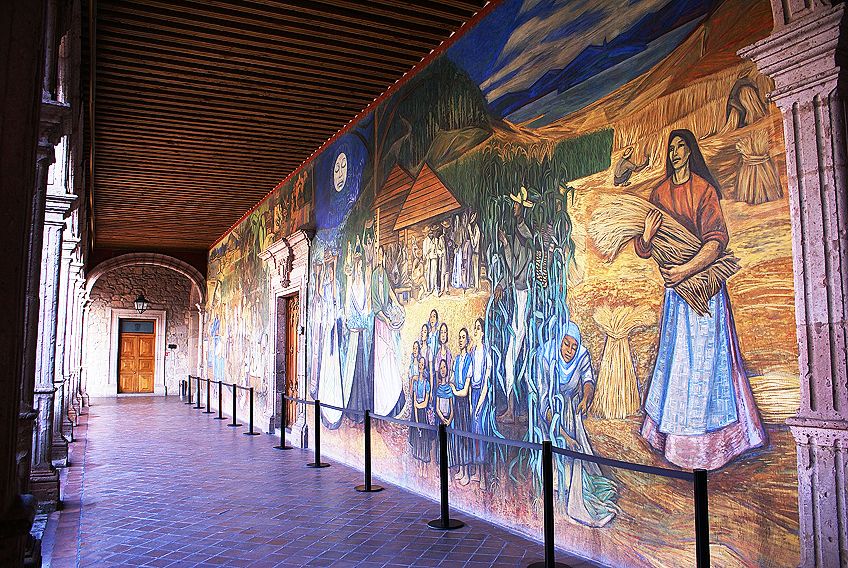
Seen as an expression of social values, with an advanced political agenda, Mexican murals went on to influence the American government-sponsored art program, Works Progress Administration (WPA), which was introduced by President Franklin D. Roosevelt in the early 1930s. This project saw 3600 artists work to create murals and sculptures across buildings for public consumption all over the United States
Mexican muralism contrasted noticeably with other art movements that were popular at the time, as it offered a fresh alternative to non-representational abstraction through works that accurately reflected society and its immediate worries.
What made Mexican muralism stand out was the fact that it remained completely detached from the horrors of both World Wars despite emerging in the middle of the two. Today, mural painting continues to be a dominant art form, with many Mexican artists producing murals with important messages.
Suggested Reading
The Mexican mural movement was a truly fascinating movement, with many of the mural paintings created still spoken about and highly respected today. If you have enjoyed reading up about this movement, we recommend the following book to learn more about the “los tres grandes” of the movement and the vital impact that their murals had on both the movement and art society.
Mexican Muralists: Orozco, Rivera, Siqueiros (1998) by Desmond Rochfort
Remembered as legendary artists today, Orozco, Rivera, and Siqueiros were the most distinguished figures of the celebrated Mexican mural movement. Emerging as great artists, their murals significantly influenced other artists and the public, leading them to massive achievements in the public art sphere of the 20th century. Their incredible rise to fame, along with their captivating personal histories, are detailed in this book, along with more than 100 stunning full-color reproductions of their most iconic mural paintings. This intelligent book exists as the first superior paperback that does justice to this incredible movement.
- Covers the life and artworks of "The Three Greats" in Muralism
- Accompanied by over 100 color reproductions of the murals
- Showcasing popular and lesser-known works from the US and Mexico
Spanning from the 1920s to the 1970s, mural painting proved to be incredibly important in both Mexican and American art. As an art form that was able to freely convey messages of a political and socialist nature, Mexican muralism art thrived in a country that was in the process of rebuilding after a revolution. Just before it quietened down, this traditional Mexican art form went on to inspire the start of the Chicano art movement, which helped Mexican artists establish a unique and firm identity while they worked in the United States.
Frequently Asked Questions
What Was the Impact of Mexican Artwork on the Rest of the World?
As Mexican muralism was so politically motivated, it had a great impact on those who viewed the works. Additionally, its placement in predominantly public areas allowed the artworks to be enjoyed by almost anyone, irrespective of their artistic knowledge or understanding. Due to its popularity in Mexico, the movement soon spread all over the world and influenced different forms of art. Mexican muralism spread most predominantly to America, Brazil, Guatemala, and Ecuador.
Why Did Mexican Muralism Art Fade Away?
After spanning for just over 50 years, the popularity of Mexican muralism art began to slowly decline. The first event that signaled the possible end of the movement was the death of David Alfaro Siqueiros in 1974. However, other reports state that the movement continued for a few years after this before formally ending. Despite the ambiguity in these dates, the official reason for the movement’s end remains speculated.
Isabella studied at the University of Cape Town in South Africa and graduated with a Bachelor of Arts majoring in English Literature & Language and Psychology. Throughout her undergraduate years, she took Art History as an additional subject and absolutely loved it. Building on from her art history knowledge that began in high school, art has always been a particular area of fascination for her. From learning about artworks previously unknown to her, or sharpening her existing understanding of specific works, the ability to continue learning within this interesting sphere excites her greatly.
Her focal points of interest in art history encompass profiling specific artists and art movements, as it is these areas where she is able to really dig deep into the rich narrative of the art world. Additionally, she particularly enjoys exploring the different artistic styles of the 20th century, as well as the important impact that female artists have had on the development of art history.
Learn more about Isabella Meyer and the Art in Context Team.
Cite this Article
Isabella, Meyer, “Mexican Muralism Art – An In-Depth Look at the Mexican Mural Movement.” Art in Context. March 4, 2022. URL: https://artincontext.org/mexican-muralism-art/
Meyer, I. (2022, 4 March). Mexican Muralism Art – An In-Depth Look at the Mexican Mural Movement. Art in Context. https://artincontext.org/mexican-muralism-art/
Meyer, Isabella. “Mexican Muralism Art – An In-Depth Look at the Mexican Mural Movement.” Art in Context, March 4, 2022. https://artincontext.org/mexican-muralism-art/.


